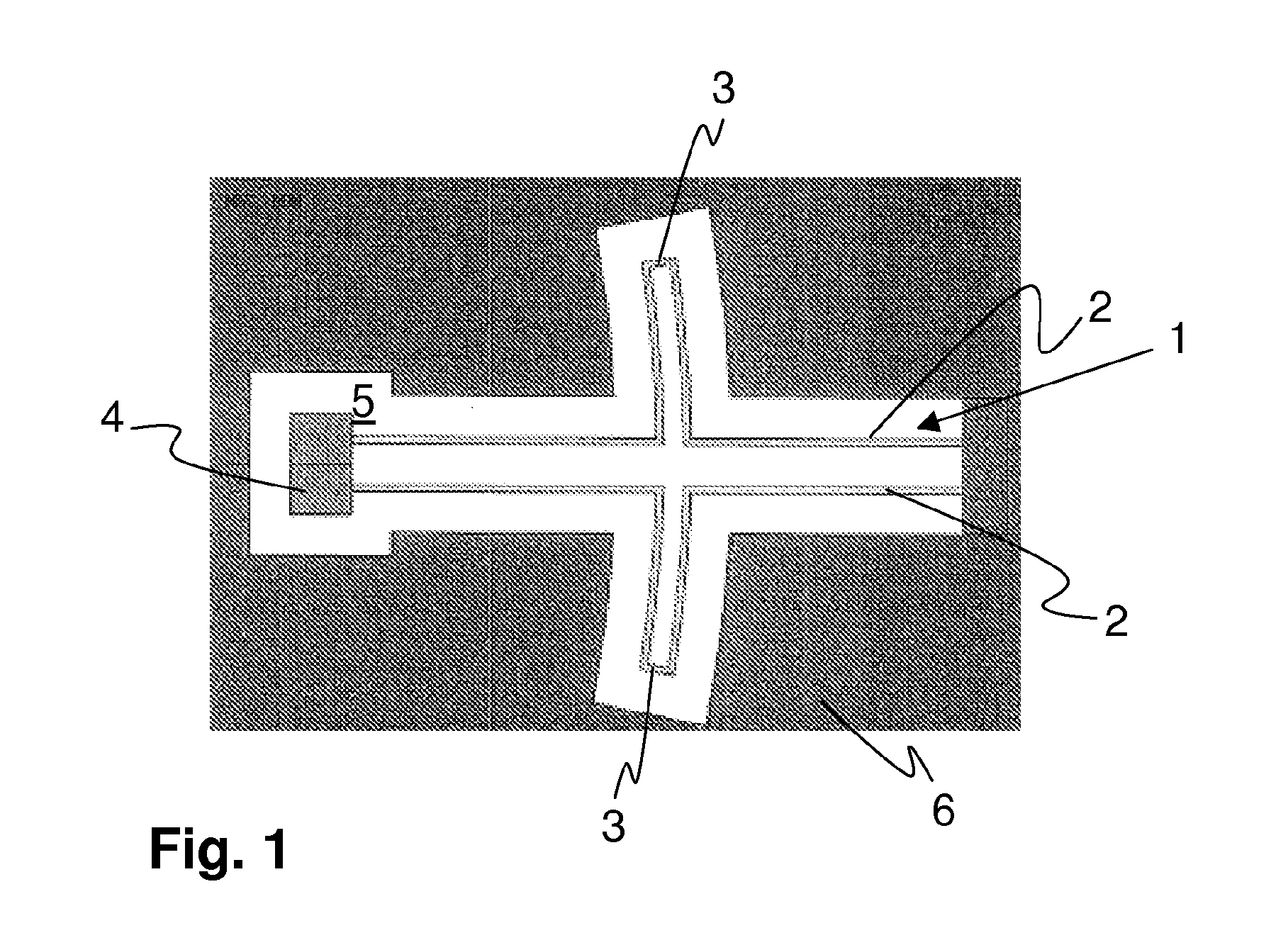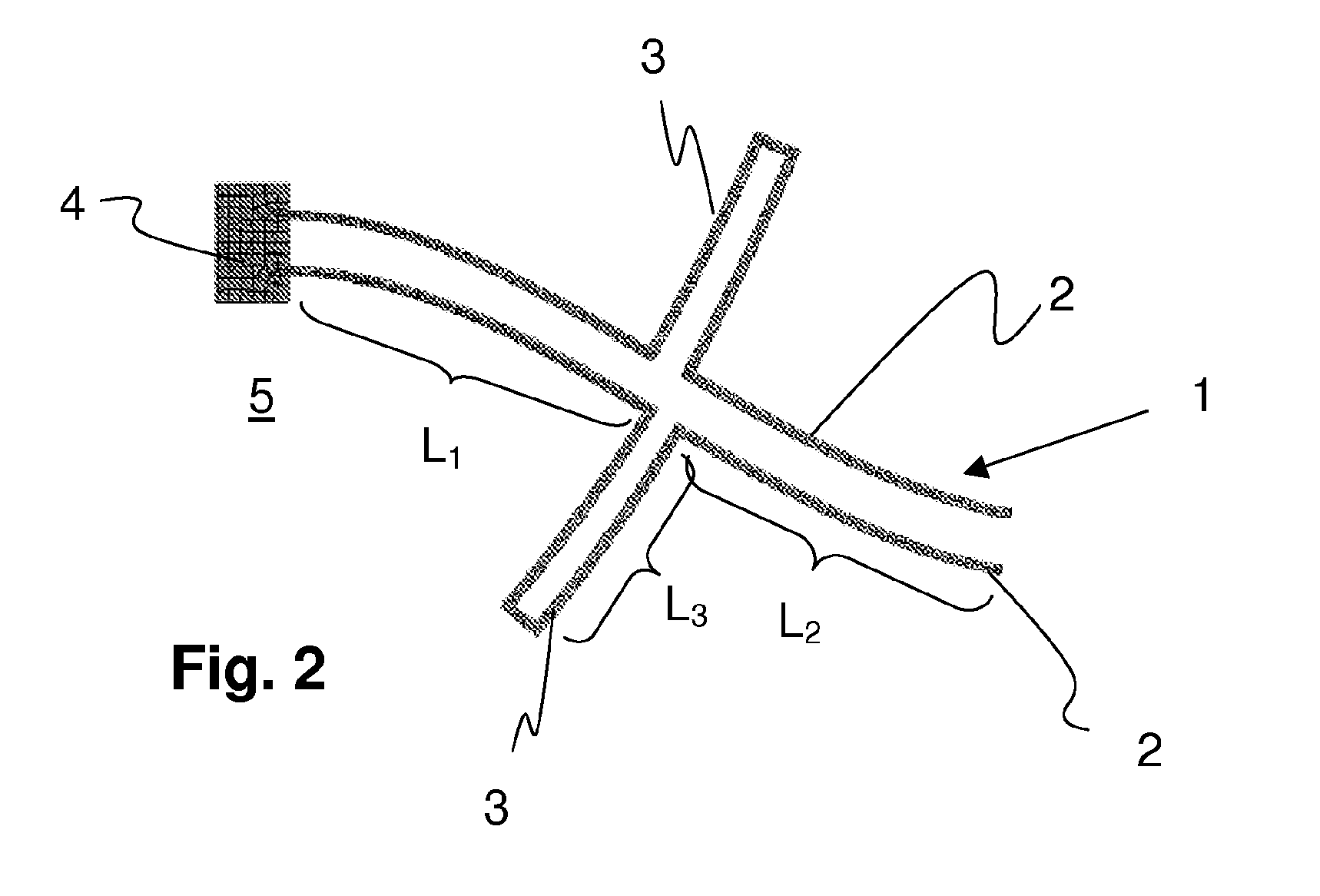Micromechanical Sensor
a sensor and micro-mechanical technology, applied in the direction of turning-sensitive devices, acceleration measurement using interia forces, instruments, etc., can solve the problems of inability to linearly deflect the bend the deflection of the corresponding sensor mass becomes smaller, and the bending of the bending spring device is difficult and prone to errors, so as to reduce the stress peak in the region of turns or inflections of the spring, the bending of the bending spring devi
- Summary
- Abstract
- Description
- Claims
- Application Information
AI Technical Summary
Benefits of technology
Problems solved by technology
Method used
Image
Examples
Embodiment Construction
[0036]FIG. 1 shows a bending spring device 1 according to the invention, having two spring bars 2 extending parallel to one another, a meander 3 being situated on each of the spring bars 2. The bending spring device 1 is attached at one end to an anchoring 4 on a substrate 5. The other end of the bending spring device 1 is situated on a mass 6 which is deflected or bent around the anchoring 4, parallel to the substrate 5. The bending occurs in particular as primary oscillation of the mass 6 about the anchoring 4. The bending thus allows a rotational motion in a plane, or, if a sensor mass is involved, a deflection due to a Coriolis force or acceleration force which occurs. The spring bars 2 and the meander 3 have a cross-sectional design, perpendicular to the plane of the drawing, such that they allow controlled bending of the spring bars 2 and of the meander 3 in the plane of the drawing. Depending on the requirements for the mass 6, movability out of the plane of the drawing is ei...
PUM
 Login to View More
Login to View More Abstract
Description
Claims
Application Information
 Login to View More
Login to View More - R&D
- Intellectual Property
- Life Sciences
- Materials
- Tech Scout
- Unparalleled Data Quality
- Higher Quality Content
- 60% Fewer Hallucinations
Browse by: Latest US Patents, China's latest patents, Technical Efficacy Thesaurus, Application Domain, Technology Topic, Popular Technical Reports.
© 2025 PatSnap. All rights reserved.Legal|Privacy policy|Modern Slavery Act Transparency Statement|Sitemap|About US| Contact US: help@patsnap.com



